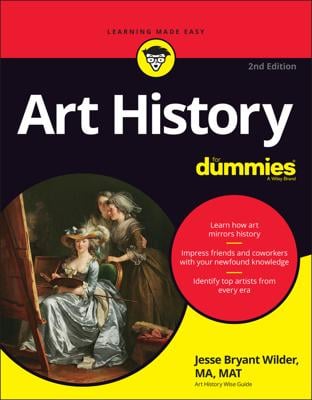Art History Articles
Paul Gauguin and the 'noble savage'
The bright colors and shocking contrasts of Paul Gauguin's paintings have amazed and perplexed artists and art lovers for over a century, and the story behind Gauguin's life and style is as interesting as his artwork.
Paul Gauguin (1848–1903) tried to return to a primitive state through art and to find the proverbial "noble savage" or natural person. Gauguin was inspired by philosopher Jean-Jacques Rousseau's "back-to-Eden" concept. According to Rousseau, "Man was born free, and he is everywhere in chains. Those who think themselves the masters of others are indeed greater slaves than they."
Gauguin claimed that everything in Europe is "artificial and conventional. . . . In order to do something new we must go back to the source, to humanity in its infancy." Eventually, his quest to shed civilization and become a noble savage took him to Tahiti. But first, he sought primitivism in rural France.
The concept of the noble savage, man living in harmony with nature, was popularized in the 18th century. It refers to an individual uncorrupted by civilization. Jean-Jacques Rousseau helped spread the idea, though he never actually used the term. In Émile, he wrote: "Everything is good in leaving the hands of the creator of things; everything degenerates in the hands of man."
Brittany paintings
In 1886, Gauguin moved to Pont-Aven, Brittany, hoping to find primitivism among the ancestors of the ancient Celts (the Bretons). Instead, he found that even the rural Bretons were socialized.
Gauguin, who had studied under Pissarro and began his painting career as an Impressionist, abandoned Impressionism in Brittany. He created a new movement called Synthetism (also known as Symbolism) by building on Cloisonnism, a style invented by his friends Émile Bernard and Louis Anquetin in about 1887. In Cloisonnism, large patches of vivid color are painted on the canvas and then bordered by thick, black lines like in stained-glass windows, except each patch is one color, with a minimum of shading.
Gauguin used Cloisonnism in his turning-point painting The Vision after the Sermon (Jacob Wrestling with the Angel), which now lives at the of Scotland. In this mystical work, praying Breton women, some with eyes shut, envision the holy wrestling match between Jacob and the angel, which their priest has just described to them in church. The battle takes place on an otherworldly red carpet spread over the landscape (in one large color patch), around which the women gather like sports spectators.
The psychological side of the painting is even more revolutionary than the technique. Gauguin weds two worlds in one work: the physical reality (the women in their Breton dresses) and the psychological reality (a picture of the women's collective vision). He had, in fact, discovered a way to reveal the inmost, unfiltered thoughts of people. By using flattened perspective and Cloisonnism, he was able to harmoniously splice people's inner visions with the world around them. Gauguin took his discovery even further in Tahiti, for which he set sail in 1891.
Tahiti didn't fulfill Gauguin's dream of finding the "noble savage." When he arrived, he discovered that thousands of European expatriates had already turned the island into an extension of Europe.
But in his work, Gauguin was able to use the contrast between what he'd hoped for and what he found. He juxtaposed the two realities, making them confront each other on adjacent picture planes. Often, he placed a primitive scene in the foreground and images or symbols of the civilized world in the background, and then flattened the painting (eliminating perspective and most shading) so the background would encroach on the foreground, peer over its shoulder, and infect it.
Gauguin's manipulation of traditional perspective and his expressive use of color had a major influence on late 19th- and early 20th-century art movements, especially Fauvism and Expressionism and the Nabis (Pierre Bonnard, Édouard Vuillard, and Paul Sérusier, who called Gauguin their spiritual father).
Also, in 1901, Picasso encountered several Gauguin paintings at a friend's house, and they inspired him to launch into his Blue Period. The Fauves were influenced by Gauguin's loud colors and shocking color contrasts: chartreuse next to blues, hot reds, oranges, and yellows that often seem to burn each other.

